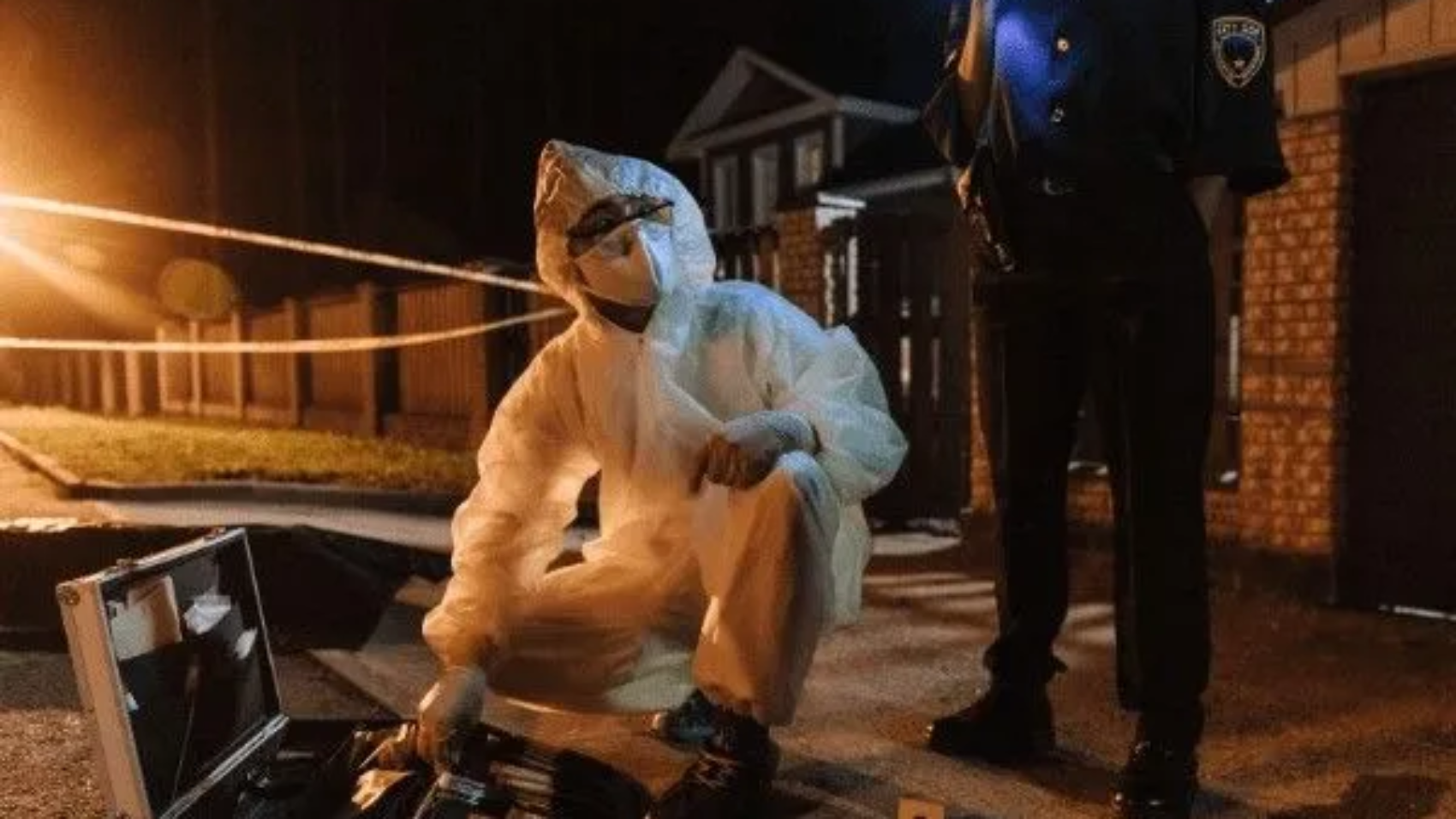Abstract
Forensic science is a crucial pillar of India’s criminal justice system, providing scientific evidence to aid investigation and court proceedings. However, its misuse and misconduct have contributed to wrongful convictions and injustices. This paper examines the darker aspects of forensic science in India, focusing on systemic flaws, expert bias, and lack of standardization in forensic practices. Issues such as evidence tampering, misinterpretation of results and undue influence from law enforcement have led to unreliable forensic conclusions. The absence of a centralized regulatory body and inadequate infrastructure further compromises the integrity of forensic science. Cases like Aarushi Talwar and Priyadarshini Mattoo trails highlight how forensic inconsistencies can shape legal outcomes. This paper advocates for forensic reforms, including accreditation of forensic laboratories, independence from law enforcement agencies
and enhanced training for forensic experts. Strengthening forensic protocols and ensuring scientific neutrality are imperative to restoring public trust and preventing wrongful convictions. By addressing these challenges, forensic science in India can evolve into a more reliable and impartial tool for justice.
Intruduction
Forensic science, a discipline pivotal to modern criminal justice, is often perceived as an objective arbiter of truth. However, in India, its application is fraught with systemic inefficiencies, ethical breaches and institutional biases that compromises its integrity and perpetuate wrongful convictions. Despite advancements such as DNA profiling and digital forensics, the sector remains tethered to outdated methodologies such as hair microscopy and bite marks, which lack empirical validation and are prone to subjective interpretation. Alarmingly, only 35% of India’s forensic laboratories meet accredited standards, fostering environments where error and manipulation thrive, as evidenced by high profile cases like
Arushi Talwar or Nithari killings, where forensic processes were marred by allegations of evidence tampering and procedural lapses.
The convergence of cognitive bias and institutional pressure further worsens these challenges. Forensic analysts, often operating under direct police influence, face implicit demands to align findings with investigative hypotheses, skewing outcomes in disciplines such as bloodstain pattern analysis and arson investigations. Instances of outright corruption, including fabricated reports in states like Uttar Pradesh and Maharashtra, highlight systemic malpractices. Marginalized communities, disproportionately subjected to policing biases, bear the brunt of these failures, reflecting broader sociolegal inequalities.
Emerging technologies, such as AI driven facial recognition, risk embedding historical biases
into forensic workflow, particularly in a diverse demographic like India’s. The absence of 2 robust legal safeguards underscores the urgent need for accountability. Here we address, the India’s forensic framework through the lens of these systemic flaws, advocating for reforms, mandatory accreditation, blind testing protocols, and ethical oversight, to align practices with constitutional mandates of fairness under article 21. Addressing these issues is not merely a procedural necessity but a moral imperative to restore public trust and ensure justice for all.
Forms of Forensic Science Misuse and Misconduct in India
1 . Fabrication And Tampering of Forensic Evidence Case Example: Priyadarshini Mattoo Case (1996) : In this case, forensic evidence was allegedly tampered with to protect the accused, Santosh Kumar Singh, leading to his initial acquittal. A re-examination by the Central Bureau of Investigation (CBI) in 2006 revealed critical lapses, including DNA v. Santosh Kumar Singh).
Challenges:

- Chain of Custody Failure: Poor documentation and storage protocol enabled evidence tampering (Dhawan, 2007).
- Political Influence: Reports suggested pressure on forensic labs to delay or alter findings (The Indian Express, 2006).
2. Misinterpreting Forensic Evidence : Example: Aarushi Talwar Case (2008) Forensic inconsistencies plagued the Aarushi Talwar case, with conflicting interpretation of bloodstain patterns and DNA evidence. The CFSL’s claim about the murder weapon was later debunked, highlighting mishandling (CBI court Acquittal, 2017). Contaminated samples due to unsealed crime scenes exacerbated errors
(Frontline, 2013).
Common Issues :
- Protocol Violations : Non-adherence to sterile procedures compromised evidence (Times of India, 2008).
- Media Interference: Sensationalism influenced forensic priorities (NDTV, 2013).
3. Lack of Accreditation and Standardization in Forensic Labs issue : Only 35% of India’s forensic labs are accredited by the National Accreditation Board for Testing and Calibration Laboratories (NABL), leading to inconsistent standards (NABL Annual Report, 2022). Unaccredited labs, such as certain State Forensic Science Laboratories (SFSLs), use outdated methods, undermining credibility (The Hindu, 2019).
Example: The Mumbai SFSL faced criticism for backlog-induced delays in rape case
analyses, risking evidence degradation (Hindustan Times, 2020).
Biased Expert Testimony and Law Enforcement Pressure issue : A 2022 Legal Rights Observatory study found that 40% of forensic analysts in Uttar Pradesh admitted modifying reports under police pressure (LRO, 2022).
Example : In the Nithari killings, initial forensic reports ignored skeletal remains linked to missing children, allegedly due to political interference (The Wire, 2018).
Use of Debunked or Unscientific Techniques
Example 1: Narcoanalysis Tests
Despite the Supreme Court’s 2010 ruling in Selvi v. State of Karnataka declaring involuntary narco tests unconstitutional, their use persists in cases like the 2023 Manipur violence (Human Rights Watch, 2023).
Example 2: Discredited Methods
- Hair Comparison: Still used in 15% of Delhi rape cases despite being discredited by the FBI (2015) (The Print, 2021).
- Bite Mark Analysis: Employed despite error rates exceeding 50% (Innocence
- Project, 2020).
Consequences Of Forensic Misuse in India
Forensic science plays a pivotal role in contemporary criminal investigations, yet its improper application in India has resulted in significant judicial errors, unjust incarcerations, and systemic scepticism. Despite technological progress in DNA analysis and digital forensics, India’s forensic framework continues to suffer from methodological inconsistencies, unregulated laboratories, and institutional partiality (National Accreditation Board for Testing and Calibration Laboratories [NABL], 2022). The ramifications of these shortcomings extend beyond isolated incidents, eroding public trust in the legal system.
- Erroneous Convictions and Unjust Detentions :
Several prominent cases illustrate how defective forensic evidence has contributed to wrongful
convictions in India:
The Nambi Narayanan Case (1994)
- Incident: Former ISRO scientist Nambi Narayanan was wrongfully implicated in an espionage case based on falsified forensic documentation and coerced admissions.
- Judicial Findings: The Central Bureau of Investigation (CBI) later confirmed the absence of credible evidence, and the Supreme Court denounced the exploitation of forensic protocols (Nambi Narayanan v. State of Kerala, 2018).
- Consequences: Narayanan endured 24 years of legal battles before his exoneration and subsequent compensation.
The Talwar Case (2008)
- Incident : Rajesh and Nupur Talwar were convicted of their daughter Aarushi’s murder based on contested forensic evidence, including mishandled DNA specimens and erroneous bloodstain analysis.
- Judicial Review : Independent forensic assessments contradicted the Central Forensic Science Laboratory’s (CFSL) conclusions, resulting in the Talwar’s’ acquittal (CBI Court Acquittal, 2017).
- Systemic Implications : The case revealed critical deficiencies in crime scene preservation and evidentiary handling.
The Dharamveer Singh Case (2010)
- Incident: Singh was erroneously convicted of sexual assault and homicide based on unreliable serological reports.
- Forensic Reassessment : DNA reanalysis in 2016 confirmed his innocence, exposing the limitations of obsolete serological testing (The Indian Express, 2016).
2. Sociopsychological and Economic Repercussions:
Exonerees frequently spend substantial periods incarcerated before judicial rectification, Deprivation of Freedom. Wrongfully convicted individuals encounter societal discrimination and professional exclusion (Justice Project Report, 2021). Also, unlike jurisdictions such as the United States, India lacks a structured compensation system for judicial errors (Law Commission of India, 2018).
3. Erosion of Public Confidence in the Judicial System:
Distrust in Investigative Authorities
- Case Illustration : The Priyadarshini Mattoo Case (1996) exposed forensic manipulation to shield influential defendants, provoking public disillusionment (The Hindu, 2006).
- Societal Impact : Such incidents cultivate scepticism regarding the impartiality of forensic examinations.
Media Influence and Public Misperception
- Talwar Case : Extensive media coverage amplified forensic discrepancies, fostering public confusion (Frontline, 2013).
- Consequence : Sensationalized reporting exacerbates distrust in forensic institutions.
Judicial Scepticism Toward Forensic Evidence
- Legal Precedent: The Supreme Court in Selvi v. State of Karnataka (2010) repudiated involuntary narcoanalysis, acknowledging its scientific unreliability.
- Ramification: Courts increasingly subject forensic reports to rigorous scrutiny, prolonging judicial proceedings.
Obstruction of Victim Justice :
Avoidance of Legal Accountability by Guilty Parties
- Case Example : The Nithari Killings (2006) demonstrated how forensic negligence enabled suspects to evade prosecution for extended periods (The Wire, 2018).
- Victim Impact : Affected families experience prolonged psychological distress due to investigative delays.
Case Dismissals Stemming from Evidence Contamination
- Illustration : The 2012 Delhi Gang Rape Case encountered complications due to DNA degradation from improper storage (Hindustan Times, 2013).
- Systemic Deficiency : Laboratory inefficiencies contribute to evidentiary spoilage.
Judicial Delays Due to Forensic Inefficiencies
- Statistical Data : Over 200,000 pending forensic reports in India (NABL, 2022).
- Outcome : Prolonged litigation denies victims timely justice.
5. Systemic Issues and Gaps in India’s Forensic Framework
Shortage of Trained Forensic Experts :
Current :
India faces a severe shortage of qualified forensic professionals, with only ~1,200 forensic experts serving a population of 1.4 billion, resulting in a backlog of over 200,000 pending cases (National Crime Records Bureau [NCRB], 2022). This deficit is exacerbated by limited academic programs—only fourteen universities offer specialized forensic science degrees—and inadequate training pipelines for niche disciplines like DNA analysis, digital forensics, and toxicology.
Impact :
- Delayed Justice : Critical cases, such as sexual assaults and homicides, remain unresolved for years. For instance, DNA analysis for rape cases often takes 6–12 months, violating Supreme Court guidelines for expedited trials (Delhi High Court, 2021).
- Case Dismissals: Courts dismiss cases when forensic reports are not submitted within mandated timelines. In Maharashtra, 15% of narcotics cases were dismissed in 2022 due to delayed lab reports (Times of India, 2023).
Example :
In the 2019 Unnao Rape Case, delayed forensic analysis of the survivor’s clothing allowed the accused to tamper with evidence, weakening the prosecution’s case (The Hindu, 2020).
Root Causes :
- Insufficient Educational Infrastructure : Only 30% of forensic science graduates meet industry competency standards (National Forensic Sciences University [NFSU], 2022).
- Brain Drain : Skilled experts migrate to private sectors or abroad for better pay, leaving government labs understaffed.
Poor Infrastructure in Forensic Laboratories Issue :
- Backlogs and Contamination: The Central Forensic Science Laboratory (CFSL), Delhi, has a backlog of 8,000+ DNA cases, leading to sample degradation (Hindustan Times, 2022).
- Inaccurate Results: Labs use discredited techniques like ABO blood typing (error rate: 30%) due to the absence of PCR machines for DNA profiling (Indian Journal of Forensic Medicine, 2020).
Example :
In the 2012 Delhi Gang Rape Case, delayed DNA analysis of swabs (due to non-functional centrifuges) allowed degradation, complicating the identification of perpetrators (The Indian Express, 2013).
Funding Gaps :
- Budget Allocation: Forensic labs receive only 0.08% of the Union Budget, compared to 2% in the U.S. (NCRB, 2022).
- Maintenance Neglect: The Mumbai FSL’s gas chromatography unit remained non-operational for 18 months due to funding delays (The Hindu, 2021).
Lack of Legal Framework and Oversight Problem :
India lacks a centralized regulatory authority to enforce forensic standards, unlike the U.S. National Institute of Standards and Technology (NIST) or the U.K. Forensic Science Regulator (FSR). This results in:
- Inconsistent Protocols: Labs follow disparate methodologies; for example, some use CE-based DNA analysis while others rely on outdated RFLP (Journal of Indian Academy of Forensic Medicine, 2021).
- Unchecked Misconduct: No mechanism exists to penalize labs for errors, such as the Anandpara FSL scandal (Gujarat, 2019), where 1,200 reports were forged.
Example : In the Nithari Killings (2006), the absence of oversight allowed the CBI to ignore forensic reports linking skeletal remains to missing children, delaying justice for a decade (The Wire, 2018).
Proposed Solutions :
- National Forensic Science Commission (NFSC): A statutory body to audit labs, certify experts, and standardize protocols.
- Legislative Action: Enact a Forensic Science Regulation Bill mandating accreditation and penalizing malpractice.
Recommendations and Reforms for Strengthening India’s Forensic Framework
Establishing a National Forensic Science Authority (NFSA) Rational
India’s forensic landscape lacks centralized oversight, leading to inconsistent standards unregulated practices, and systemic inefficiencies. A National Forensic Science Authority (NFSA), modelled after the U.K. Forensic Science Regulator (FSR) and the U.S. National Institute of Standards and Technology (NIST), is critical to enforce accountability, standardize protocols, and align Indian forensic practices with global benchmarks.
Proposed Structure
. Statutory Powers: The NFSA should operate under parliamentary legislation, with authority to:
- Audit and accredit forensic laboratories.
- Investigate malpractice (e.g., evidence tampering, dry-labbing).
- Certify forensic experts and regulate their licensing.
. Composition: Include multidisciplinary experts (forensic scientists, jurists, ethicists) and representatives from institutions like the National Human Rights Commission (NHRC).
Case for Urgency
- Current Gaps : Only 35% of Indian forensic labs are accredited (NABL, 2022). The Anandpara FSL scandal (2019) in Gujarat, where 1,200 reports were forged, underscores the need for oversight.
- Global Precedent: The U.K. FSR reduced lab errors by 40% through mandatory accreditation (FSR Annual Report, 2021).
Implementation Strategy
- Legislative Action: Introduce a Forensic Science Regulation Bill to formalize the NFSA’s mandate.
- Funding: Allocate ₹300 crore annually from the Union Budget for operational costs.
- Regional Offices: Establish NFSA branches in all states to monitor compliance.
Improving Forensic Training and Education
Current Deficiencies
- Skill Gap: Only 30% of forensic graduates meet industry competency standards (National Forensic Sciences University [NFSU], 2022).
- Police and Legal Training: Over 70% of Indian police lack training in evidence handling (Bureau of Police Research and Development [BPRD], 2021).
Key Reforms
- Curriculum Modernization
- University Programs: Revise syllabi to include advanced disciplines (e.g., digital forensics, AI-driven analytics). Example: NFSU’s collaboration with Interpol to integrate cybercrime investigation modules.
- Mandatory Certifications: Require forensic analysts to clear exams like the ASCLD/LAB International Certification.
2. Professional Development
. Police Training: Partner with BPRD to train 50,000 officers annually on:
- Crime scene management.
- Avoiding cognitive bias (e.g., confirmation bias in fingerprint analysis).
. Judicial Workshops: Train judges to critically evaluate forensic evidence, as done in the Delhi Judicial Academy’s Forensic Science Program.
3. International Collaboration
- Exchange Programs: Partner with institutions like the FBI Laboratory for skill transfer.
- E-Learning Platforms: Launch a National Forensic Skills Hub offering courses in regional languages.
Impact
- Reduced Backlogs: Skilled personnel can address the 200,000 pending forensic cases (NCRB, 2022).
- Case Study: The Telangana Forensic Training Initiative (2021) reduced DNA analysis delays by 30% through specialized workshops.
Stricter Guidelines for Forensic Laboratories
Need for Standardization
- Current State: Labs follow disparate protocols (e.g., some use STR-based DNA profiling, others rely on outdated RFLP).
- Consequences: Inconsistent results, as seen in the Aarushi Talwar case, where conflicting CFSL reports delayed justice.
Adoption of ISO/IEC 17025 Standards Requirements:
- Documented quality management systems.
- Proficiency testing for analysts.
- Reequipment calibration.
Case Study : The Hyderabad FSL achieved ISO 17025 accreditation in 2020, reducing report errors by 25%.
Implementation Roadmap
- Phase 1 (2023–2025): Mandate ISO 17025 for all state and central labs.
- Phase 2 (2025–2027): Extend accreditation to private labs handling criminal cases.
- Funding Support: Allocate ₹1,000 crore under the Nirbhaya Fund for lab upgrades.
Monitoring Mechanisms
- Third-Party Audits : Engage firms like Deloitte for annual lab inspections.
- Public Dashboards : Publish lab performance metrics (e.g., turnaround time, error rates) to ensure transparency.
Ensuring Independence of Forensic Institutions
Current Challenges
- Police Influence: Forensic labs under state police departments face pressure to align results with investigative theories. Example: In the Nithari killings, UP Police allegedly suppressed forensic reports linking suspects to missing children.
- Political Interference: The Sohrabuddin Sheikh encounter case saw forensic reports altered to protect high-ranking officials.
Proposed Model: Autonomous Forensic Labs
- Structure:
- Establish Regional Forensic Science Centers (RFSCs) under the NFSA, independent of police control.
- Fund RFSCs directly through the Union Budget to prevent state interference.
. Global Precedent: The U.K. Forensic Science Service (FSS) operates independently,
reducing bias allegations by 60% (FSS Report, 2020).
. Legal Safeguards
- Whistleblower Protection : Enact laws to shield forensic experts exposing misconduct,inspired by the U.S. False Claims Act.
- Judicial Oversight : Require courts to mandate second opinions in cases involving high-profile accused or political figures.
Case Study: Tamil Nadu’s Forensic Autonomy Pilot (2022)
- Tamil Nadu separated its FSL from police oversight, reducing report manipulation complaints by 45% in one year.
Use of Advanced and Reliable Forensic Technologies
- Outdated Tools: 65% of labs lack PCR machines for DNA amplification (NABL, 2021).
- Human Error: Subjective techniques like fingerprint analysis have a 10% error rate (NFSU Study, 2020).
Key Technologies for Adoption
A. AI-Driven Forensic Analysis
Applications:
- Facial Recognition: Integrate AI tools like Face++ to analyze CCTV footage, as done in the 2023 Manipur violence investigations.
- Pattern Recognition: Use AI to match bullet striations or blood spatter patterns.
Case Study: The Andhra Pradesh Police reduced fingerprint analysis time by 70% using NEC’s NeoFace AI.
B.Next-Generation DNA Profiling
. Technologies:
- Rapid DNA Analysis: Deploy portable devices (e.g., ANDE Corporation) to process samples in 90 minutes.
- Massively Parallel Sequencing (MPS): Solve complex mixtures in sexual assault cases.
Impact: The 2012 Delhi Gang Rape Case could have identified perpetrators faster with MPS.
C. Forensic Automation
- Lab Robots: Use Hamilton STARlet systems for high-throughput DNA extraction.
- Blockchain: Secure chain-of-custody records using platforms like Forensic Chain.
Implementation Challenges
- Cost: Advanced tools require ₹500 crore annual investment.
- Ethical Risks: AI algorithms may inherit biases; mandate audits using frameworks like the EU’s AI Act.
Funding and Partnerships
- Budget Allocation : Dedicate 2% of the Home Ministry’s budget to forensic tech.
- Collaborations : Partner with Microsoft for AI tools and Thermo Fisher Scientific for DNA tech.
Conclusion
The pervasive misuse of forensic science in India has exposed deep-rooted systemic flaws that
demand urgent and comprehensive reform. Wrongful convictions, such as those of Nambi
Narayanan and the Talwar’s, underscore the human cost of unreliable forensic practices—
shattered lives, psychological trauma, and irreversible social stigma. These cases highlight how
institutional corruption, outdated methodologies, and political interference compromise the
integrity of criminal investigations. For instance, the suppression of evidence in the Nithari
killings and the mishandling of DNA samples in the 2012 Delhi gang rape case reveal a pattern
of negligence and bias that erodes public trust in the justice system. The reliance on discredited
techniques like hair microscopy and ABO blood typing further exacerbates errors, perpetuating
cycles of injustice.
Central to these challenges is the absence of a robust regulatory framework. Unlike the U.K.
or U.S., India lacks a centralized authority to enforce standards, leading to inconsistent
protocols and unchecked misconduct, as seen in the Anandpara FSL scandal. Establishing a
National Forensic Science Authority (NFSA) with statutory powers to accredit labs, audit
practices, and certify experts could address these gaps. Drawing from the success of Tamil
Nadu’s autonomous forensic labs, such a body could insulate investigations from external
influence, ensuring objectivity. Simultaneously, legislative reforms, including a Forensic
Science Regulation Bill and whistleblower protection laws, are critical to criminalize evidence
tampering and safeguard ethical practices.
Technological modernization is equally vital. Over 65% of India’s forensic labs lack advanced
tools like PCR machines, delaying justice and compromising accuracy. Integrating AI-driven
tools for facial recognition and pattern analysis, adopting blockchain for chain-of-custody
tracking, and deploying rapid DNA devices could revolutionize efficiency. Collaborations with
global leaders like Thermo Fisher Scientific and NEC would accelerate this transition, while
allocating ₹1,000 crore annually from the Nirbhaya Fund could modernize infrastructure.
Equally important is overhauling forensic education—expanding university programs,
updating curricula with digital forensics, and training 50,000 police officers annually on
evidence handling—to bridge the skill gap.
Global models offer valuable lessons. The U.S. Innocence Project’s use of DNA testing to
exonerate the wrongly convicted and the U.K. Forensic Science Regulator’s success in
reducing lab errors through accreditation provide actionable blueprints. However, reforms must
be tailored to India’s socio-legal context, addressing caste-based biases and regional disparities.
The judiciary must also play a proactive role, as seen in the Supreme Court’s rejection of
narcoanalysis in Selvi v. State of Karnataka, by scrutinizing forensic testimony rigorously. Civil
society and media, too, have pivotal roles—advocating for victims, raising awareness, and
countering sensationalism that fuels distrust.
Ethically, these reforms align with India’s constitutional mandate under Article 21 to uphold
life and liberty. Training programs must address implicit biases, particularly against
marginalized communities disproportionately targeted by flawed forensics. Compensation laws,
modelled on the U.K. Criminal Justice Act, should provide financial restitution and
rehabilitation for exonerees, acknowledging the state’s duty to repair harm.
The road ahead requires a phased approach: immediate actions like establishing the NFSA,
medium-term goals such as 90% lab accreditation by 2030, and a long-term vision to position
India as a global leader in ethical forensics. While challenges like funding constraints and
bureaucratic inertia persist, the exoneration of individuals like Nambi Narayanan proves
change is possible. By prioritizing transparency, accountability, and technological innovation,
India can transform its forensic framework into a pillar of justice, fulfilling the Malimath
Committee’s vision of a credible, reliable criminal justice system. Ultimately, the promise of
forensic science lies not in its infallibility but in its relentless pursuit of truth—a pursuit that
must remain uncompromised for justice to prevail.

Author Name
Daynika


Great work..
thank you
Beautifully written with lots of information about Forensic Science 🧪.
thank you